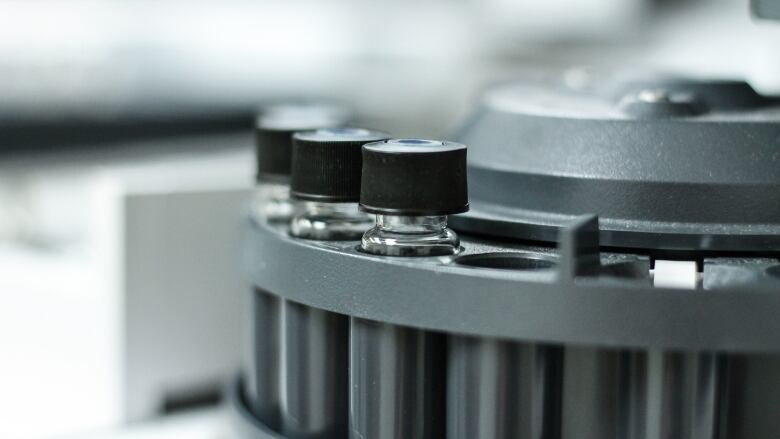How Hamilton researchers are contributing to the fight against COVID-19
Feds give $5.7M to research sepsis, developed by most critically ill COVID-19 patients

Scientists from St. Joseph's research institute in Hamilton want to understand why the COVID-19 virus can have severe effects on one person, but not the other.
A team led by Dr. Jeremy Hirota, assistant professor at McMaster University, will evaluate how people's immune responses differ to SARS-CoV-2 the virus that causes COVID-19. They think there's a difference between patients' lung immune systems.
"By understanding which patients' lung immune systems are helpful and which are harmful, we may be able to help physicians proactively manage the more at-risk patients," said Hirota in a media release.
Scientists have discovered that the virus enters into a cell through two receptors on its surface.The team thinks that there are other pathways that the virus might be taking to infect cells and they want to find them.
The scientists are using nasal swabs collected for clinical diagnoses of COVID-19. They'll examine genetic material left on the swabs to comparepatients' genes with their disease progression.
The project is receiving money from two grants and from a provincial government fund for COVID-19 research.
The province has also selected various other projects at McMaster University for this funding.
Needless to say, there's a lot of research happening. In June, McMasterreceived around $20 million for 17 COVID-19 research projects from the Canadian Institutes of Health Research (CIHR) and its partners.
The school and donors arealso funding 36 different projects relevant to COVID-19 research, with researchers looking at vaccines, treatments, longer-term impacts and collateral damage on populations and economies.
Here's a look at some research projects in Hamilton:
Feds give $5.7 million for Sepsis Canada
The federal government will provide $5.7 million to fund a newnational research network on sepsis a life-threatening condition that results from an out-of-control immune response to infection.
COVID-19 is now on the list of pathogens that cause sepsis, said a media release, and most people who become critically ill with the virus develop it.
Sepsis Canada will track and study treatments, develop tools to educate the public and health care professionals on how to prevent, diagnose and manage sepsis, and collect data to understand the "burden of sepsis in Canada."
Sepsis Canada is led by Dr. Alison Fox-Robichaud at McMcaster University.
Can wastewater reveal community spread?
McMaster University researchers say testing the province's wastewater system might give a non-invasive way to detect community spread of the virus.
Engineering professor Gail Krantzberg, along with wastewaster expert and faculty member Zobia Jawed, said that virus fragments can be found in the feces of infected people.
So testing the water, Krantzberg said in a media release, would give a real-time indicator of how many people are infectedsimilar to testing for polio or E. coli.
It could also help manage the implications of moving to Stage 3 "by tracking the emergency of a possible next outbreak" and identifying hotspots.
But they still need to find out if cities have the capacity to fund this. To start out, they'll work with 30 or 40 plants, private labs, and First Nations communities, villages and remote communities.
New COVID-19 lab test speeds up testing
St. Joe's researchers developed novel COVID-19 testing methods in May, which allowed for an increase in testing capacity across the province.
The Hamilton Regional Laboratory Medicine Program, which does testing for the region, was testing around 800 samples per day. Dr. David Bulir and Dr. MarekSmiejawanted to bump this up to 6,000.
Bulir's research allowed for specimen pooling, which meant labs could increase their capacity fourfold by further examining the pools that came back with positive results.
Ongoing evaluation of evidence
The director of St. Joe's biostatisticsunit, Dr. Lehana Thabane, is part of an ongoing, "living" systematic review that continuously assesses the strength of evidence that is published on COVID-19.
This means evidence will remain up to date as research constantly grows on the beneficial and harmful effects of interventions for COVID-19.
Thabane also published a study on the risk of transmitting respiratory viruses when using public, ground transportation.
Here are some other St. Joe's researchers and their work:
- Dr. Waleed Alhazzaniand theteam will study whether people with low blood oxygen fare better while lying face down on their stomach or face up.
- Dr. James MacKillop, also a professor at McMaster University,will investigate the mental health and substance use impacts of COVID-19.
- Collecting data from people who have been tested for COVID-19 and patients admitted with suspected or confirmed cases is not standardized. Dr. Andrew Costa will lead a registry platform to facilitate this data collection, and will include categories like demographics, comorbidities, and outcomes.












_(720p).jpg)


 OFFICIAL HD MUSIC VIDEO.jpg)
.jpg)



























































































